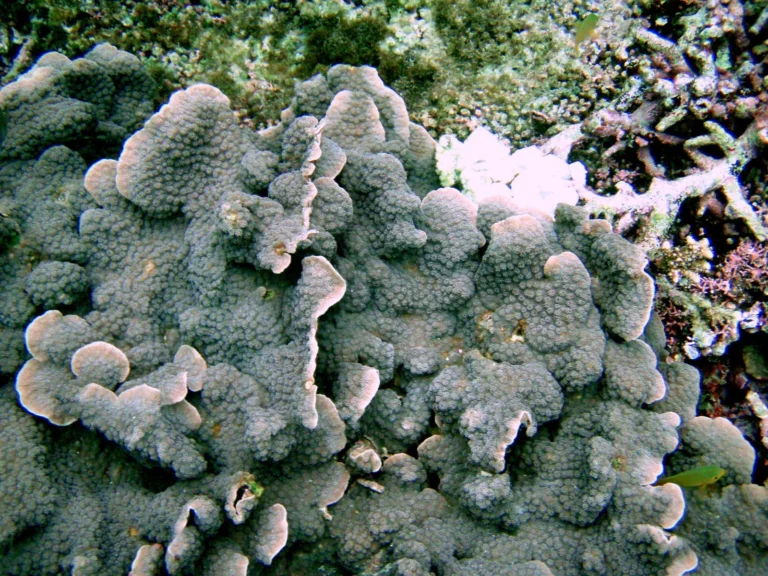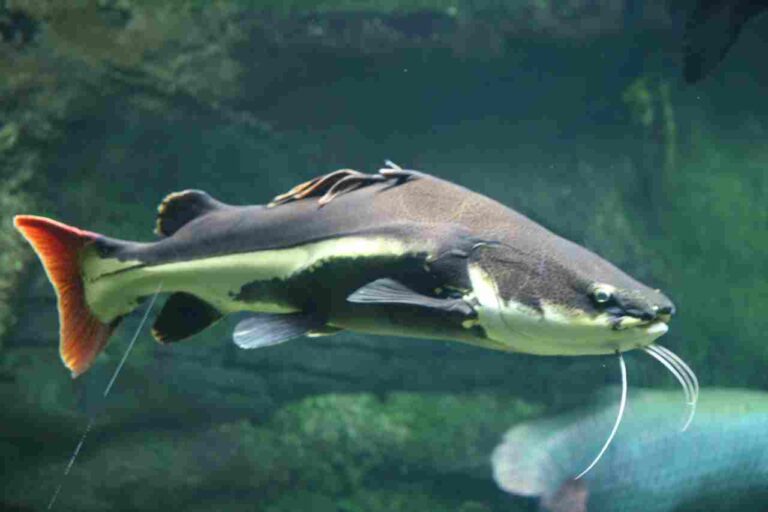5 Effects of Thermal Pollution and Their Attributes Explained
Effects of thermal pollution are; dissolved oxygen (DO) depletion, biodiversity loss, carbon and oxygen cycle alterations, toxin concentration-increase, metabolic and adaptive changes (including reproductive and migratory).
This article discusses the examples of thermal pollution, as follows;
1). Dissolved Oxygen (DO) Depletion (as one of the Effects of Thermal Pollution)
The oxygen, nitrogen and carbon cycles are all affected by thermal pollution, mostly in a negative manner.
In fact, one of the most common examples of thermal pollution features the progressive decline in dissolved oxygen (DO) levels in aquatic ecosystems, along with ambient temperature rise.
The main effect of thermal pollution on oxygen solubility in water bodies is an inversely-proportional effect, where oxygen becomes less soluble as the severity of pollution increases [3].
This means that dissolved oxygen levels in water tend to decrease as a result of thermal pollution, so that every degree rise in temperature equals to a drop in oxygen availability.
Dissolved oxygen depletion has significant implications for both biotic and abiotic components of the ecosystem.
In all kinds of aquatic environments, including marine biomes like oceans, and freshwater lakes and ponds; loss of dissolved oxygen poses a threat to nutrient-supply equilibrium, and organic survival.
Unlike oxygen, nitrogen (especially in its oxide form, like N2O and NO3) tends to increase in concentration with increase in temperature [5], mostly due to thermochemical effects on sediments. Thermal pollution can cause eutrophication by inducing an unnatural rise in the concentration and rate of accumulation of nitrogen and other essential nutrients.
These nutrients may in turn induce unnaturally-rapid algal growth, which can further deplete oxygen, and may raise toxicity levels to hazardous extents.
The acuteness with which thermal pollution depletes dissolved oxygen may vary with factors like the sources and causes of thermal pollution involved in a given scenario. Sampling and/or direct testing could be used analyze and determine this degree of depletion.

2). Biodiversity Loss
Thermal pollution affects biodiversity in a negative manner, so that organic survival rate tends to diminish with increase in the severity and areal coverage of thermally-induced environmental degradation [2].
The negative effect of thermal pollution on biodiversity can be traced to more than one temperature-related mechanism. Again this effect is most obvious in marine ecosystems, because the high conductivity and fluid-phase of water constitute an ideal environment for rapid and wide-range thermal energy transmission.
To begin with, thermal pollution tends to reduce the amount of dissolved oxygen that is available, thereby creating anaerobic conditions in any system where it occurs.
Because an overwhelming proportion of organisms on Earth are aerobic, such anaerobic conditions will invariably threaten their ability to survive.
The ripple effect of this in most cases is acute disruption of the food chain, energy and biomass pyramids of the ecosystem, which indicates major problems with ecologic functionality and sustainability.
A disrupted food chain is equivalent to a loss of biodiversity, because it implies that organisms at various trophic levels of the ecosystem may become unable to access food for their nutrition and survival.
Another mechanism by which local biodiversity is lost to thermal pollution, is the induced migration of local organic populations to areas with less-altered or unaltered conditions.
This scenario is especially possible in large ecosystems that have high species richness and population size, as well as vast areal span, so that the effects of thermal pollution may affect only a fraction of the total habitable area.
Induced migration is often accompanied by rapid adaptive changes in affected organisms; especially in terms of their behavior(s). Such adaptations are often more detrimental than helpful due to the unnatural circumstances and unstable conditions under which they are formed.

3). Carbon and Oxygen Cycle Alterations (as one of the Effects of Thermal Pollution)
Impacts of thermal pollution can be observed in the form of changes to natural biogeochemical cycles.
The carbon cycle is affected by thermal pollution through changes in the trend of production of biomass. These changes can be traced to food chain disruptions that accompany biodiversity decline and other biotic effects of thermal pollution.
Processes of the carbon cycle such as carbon sequestration and biodegradation are also altered by thermal pollution, which affects the ability of soils, forest vegetation and water bodies to play their role as natural carbon sinks.
The ultimate outcome of this is a tendency toward excessive carbon buildup in the atmosphere, and deficiency of organic carbon on the Earth's surface, both of which may accelerate global warming and climate change.
Oxygen natural cycling (or recycling) is also affected by thermal pollution.
Effects of thermal pollution on biological and chemical oxygen demand include a directly-proportional variation of these parameters with temperature; so that every degree rise in ambient temperature results in a rise in oxygen demand.
The reason for this is that heat increases the metabolic rate of most organisms by causing them to lose energy more rapidly [4]. This raises their demand for oxygen and other nutrients; and often results in large-scale resource depletion.
Coupled with the fact that oxygen solubility in water decreases with increase in temperature, it is obvious that the overall effect of thermal pollution on the oxygen cycle is deteriorative.
4). Toxin Concentration-Increase
Thermal pollution causes an increase in toxin concentration, in an ambient medium where biochemical processes are occurring.
The dynamic between toxins and temperature especially in water, is a two-sided one. Increase in temperature facilitates the accumulation of toxins and increases their potency, while the presence of large concentrations of toxins causes an increase in temperature.
This dynamic can be attributed to thermochemical metabolic reactions that enable toxins to accumulate, and increases their reactive capacity.
An example of the effect of thermal pollution on toxicity is increased bioaccumulation of Copper (Cu), Mercury (Hg) and Arsenic (As) with intensive thermochemical metabolism of selenoprotiens [1].
Increase in toxin concentration can lead to other forms of degradation like water and land pollution, and contributes to other hazardous effects like human health problems and biodiversity decline, which could be observed in the form of aquatic fish-kills, among others.
5). Metabolic and Adaptive Changes (as one of the Effects of Thermal Pollution)
Thermal pollution affects organic metabolism by increasing the rate of enzymatic reactions in living organisms, which increases metabolic rates, and demand for oxygen and nutrients.
The metabolism of aquatic animals tends to increase with temperature, so that thermal pollution makes these organisms require and consume more food and oxygen.
Adaptive changes can occur due to thermal pollution because most organisms perform optimally within a measurable range of temperature conditions to which they have adapted.
Sudden changes to their environmental temperature, such as occur with thermal pollution, stimulate rapid adaptive efforts in these organisms that can affect their reproduction and survival, and could cause a major portion of the population, to migrate in search of less-affected areas.

Conclusion
Effects of thermal pollution are;
1. Dissolved Oxygen (DO) Depletion
2. Biodiversity Loss
3. Carbon and Oxygen Cycle Alterations
4. Toxin Concentration-Increase
5. Metabolic and Adaptive Changes
References
1). Gashkina, N. A.; Moiseenko, T. I. (2020). "Influence of Thermal Pollution on the Physiological Conditions and Bioaccumulation of Metals, Metalloids, and Trace Metals in Whitefish (Coregonus lavaretus L.)." Int J Mol Sci. 2020 Jun 18;21(12):4343. Available at: https://doi.org/10.3390/ijms21124343. (Accessed 17 May 2023).
2). Jin Y.; Behrens, P.; Tukker, A.; Scherer, L. (2022). "Biodiversity Loss from Freshwater Use for China's Electricity Generation." Environ Sci Technol. 2022 Mar 1;56(5):3277-3287. Available at: https://doi.org/10.1021/acs.est.1c07155. (Accessed 17 May 2023).
3). Kulkarni, S. J.; Meghe, D. (2016). "A Review on Research and Studies on Dissolved Oxygen and Its Affecting Parameters." Available at: https://www.ijrrjournal.com/IJRR_Vol.3_Issue.8_Aug2016/Abstract_IJRR004.html. (Accessed 17 May 2023).
4). Schulte P. M. (2015). "The effects of temperature on aerobic metabolism: towards a mechanistic understanding of the responses of ectotherms to a changing environment." J Exp Biol. 2015 Jun;218(Pt 12):1856-66. Available at: https://doi.org/10.1242/jeb.118851. (Accessed 17 May 2023).
5). Zhu, D.; Cheng, X.; Sample, D. J.; Liu, Z.; Qiao, Q. (2023). "Effect of water temperature on internal nitrogen release from sediments in the Pearl River Delta region, China." Available at: https://doi.org/10.21203/rs.3.rs-2589596/v1. (Accessed 17 May 2023).












